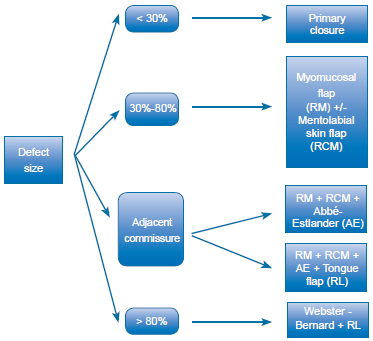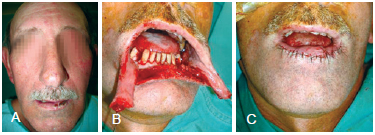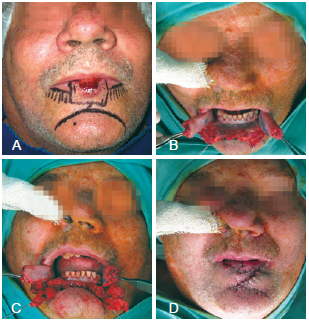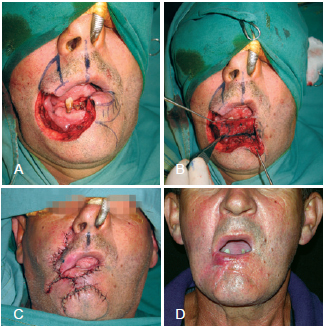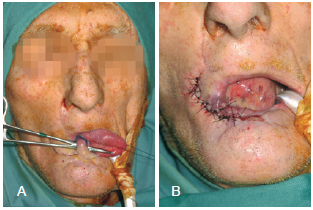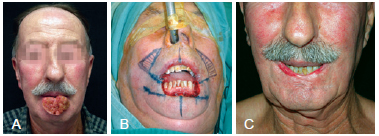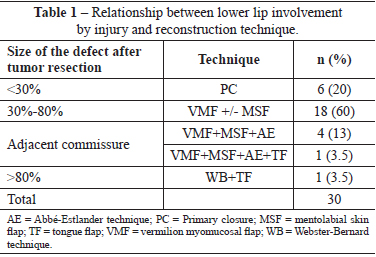ABSTRACT
BACKGROUND: The upper and lower lips represent the most important functional and aesthetic anatomical structures of the lower segment of the face. Given the complex functions of these structures, reconstruction of labial defects presents a challenge for plastic surgeons.
METHODS: Thirty patients with full-thickness lower lip defects underwent lip reconstruction according to the extent of the defect after tumor resection.
RESULTS: Six (20%) patients presented lesions of up to 30% of the total lip surface that required primary closure. Eighteen (60%) patients had lesions of 30-80% of the total area of the lower lip that were repaired using a myomucosal flap; in 14 of these patients, bilateral skin flaps were also used due to cutaneous involvement associated with the resection. Five (16.6%) patients had lesions on the lower lip that were adjacent to the oral commissure; therefore, they underwent reconstruction using an Abbé-Estlander flap with a myomucosal flap and bilateral skin flaps. One (3.5%) patient had a lesion covering 90% of the lower lip that was reconstructed using the Webster-Bernard technique and a tongue flap.
CONCLUSIONS: Here, we present a simplified, systematic, and literature-based strategy for planning lower lip reconstructions that employs effective and reproducible techniques, which can be used for training resident physicians in the treatment of complex lower lip lesions according to the extent of tissue loss, thereby yielding appropriate aesthetic and functional results.
Keywords: Lip/surgery. Surgical flaps. Reconstructive surgical procedures.


